State of the waters of the river basins of the Autonomous Community
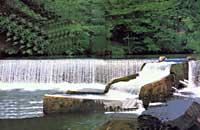
Although young people have always known the most important rivers of Euskal Herria dirty and bad, it seems that this is what our parents and grandparents say, who once emitted clean and clean water. Sewers of indescribable color, arrogant foams of dirty snow and unpleasant smell that drowns us, it seems that before they were not. "Look, if not, at the levels for salmon in river dams." And we, as we are prudent and know that salmon have clean waters as a horn, believe these mythological stories.
Basins of the Autonomous Community
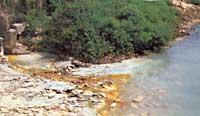
The three Basque provinces of the Autonomous Community of Euskadi, Álava, Bizkaia and Gipuzkoa respectively, are distributed hydrologically in 25 river basins. Some of them pour their waters to the Gulf of Bizkaia and others to the Mediterranean Sea through the Ebro. The boundary of the Mediterranean and Cantabrian slopes coincides practically with the provincial boundaries Araba/Bizkaia and Araba/Gipuzkoa.
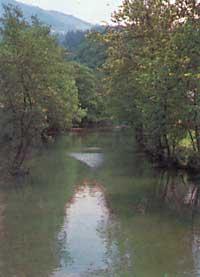
Six Gipuzkoan basins end in the Bay of Biscay. These correspond to the rivers Oiartzun(2), Urumea(3), Oria(4), Urola(5) and Deba(6) (*). The Bidasoa River, one of the cleanest in the Basque Country, leaves its waters in the Gipuzkoa Sea, despite having its longest stretch in Navarre.
In Bizkaia there are 11 river basins. These also lead to the Bay of Biscay the waters they collect as a result of the rain. There are two large river basins: Ibaizabal (13) and Cadagua (14). In addition, there are the rivers Butroe(10), Oka(9), Lea(8), Artibai(7), Karrantza(18) and Barbadun (16).
Finally, in Alava 6 basins are located and all its waters, forming part of the Ebro, head to the Mediterranean. Most of the area of this province consists of the river basins of Zadorra(21), Baia(20) Omecillo(19) and Ega(24). In Alava there are other basins: Major(17), Inglares(22), Araia(23) and La Rioja(25), but these are very small and have no greater importance.

On the other hand, the Alava valleys of Ayala and Llodio, give their waters to the Vizcaínos rivers of Cadagua and Nervión, and the Alavés Aramaio is part of the Deba basin. In addition, the Biscayan towns of Otxandio and Ubide are integrated into the Zadorra system.
Current situation
The water quality of rivers (and any mass of water in general) can be expressed by different criteria. The criteria used will depend on the use you want to give this water. There will be different criteria, taking into account the biological/chemical/physical conditions that this water must meet: if you want to use water in the cooling system of an industry or if it is used to supply the drinking water of a village, for example.
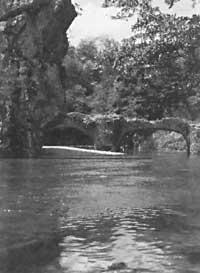
This article will analyze the water quality of the rivers of the Autonomous Community from three different criteria: depending on how it supports life, can be used for food and can be used in leisure.
Conclusion
This study, commissioned by the Basque Government, has brought to light what we all perceived, that the state of the rivers of the Autonomous Community is absolutely regrettable and serious.
Many conclusions and opinions may arise about the origin and cause of this situation, as well as the measures necessary to correct the deterioration. This is a personal work that everyone must reach the conclusions and attitudes that must be adopted to defend them. Now, at least, we cannot say that we do not know what is happening.
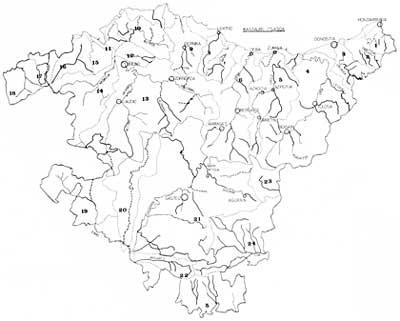
1. MAP: Situation of the waters of the Autonomous Community of the Basque Country as a support for life. Water is divided into three classes from the point of view that can support life, according to the European Economic Association.
- Class: Waters capable of maintaining fish stocks of salmonid (salmon and trout) and cypress (carp) families. Class: It comprises the waters capable of maintaining cyprinids.
- Class: Waters of worse quality than Class 2. The truth is that this map does not need much constancy. Once reviewed, we immediately warned that the water quality of the rivers of the Autonomous Community is very poor. The waters of classes 2 and 3 predominate, especially on the Cantabrian slope. Few major rivers are able to maintain salmonids along its entire riverbed. The most significant exception would be the Lea River. Moreover, the main Basque basins focus on class 3 waters. This means that the waters are not able to sustain life.
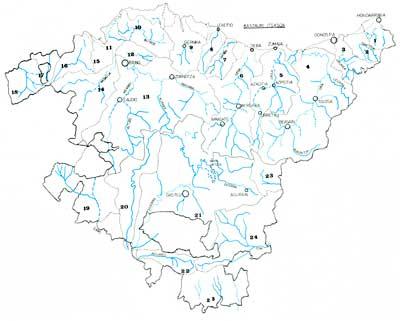
2. MAP: State of the waters of the Autonomous Community of the Basque Country to the extent that they can be used for food.
Four classes are distinguished according to this approach:
- Class: Water that can be purified by simple treatment, such as chlorination or rapid filtration.
- Class: Those likely to be purified by conventional treatment (i.e. by deposition/filtration).
- Class: Those who, in addition to what they must endure in Class 2, need sophisticated treatment such as activated carbon or ozonation.
- Class: Non-food waters, except in exceptional cases with special treatment.
The warp to the previous map serves almost entirely for this, although in some cases it seems that the situation is better. However, it should be noted that, also in this case, the basins of the Oria, Deba and Ibaizabal rivers are dead.

3. MAP: State of the waters of the Autonomous Community of the Basque Country from the point of view of degrading uses.
In this section two kinds of water differ.
- Class: Water suitable for degrading use in contact with water.
- Class: Inadequate water for degrading uses in contact with water.
From here it is concluded that it is better not to bathe in the Basque rivers and streams.





